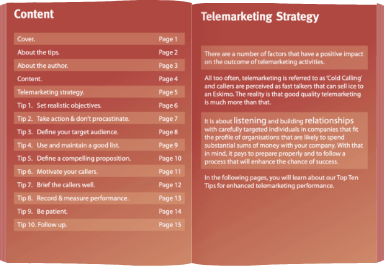Most companies need to generate new business to survive. We’d all like to rely on referrals and current customers alone but, for most organisations, that isn’t the real world.
With that in mind, businesses need to do 5 main things to grow their revenue and profit in order to fuel growth.
-
- Undertake outbound marketing to generate fresh sales leads
- Drive more inbound or ‘warm’ customer enquiries, typically via the web
- Develop and nurture the sales pipeline so there’s a steady stream of new opportunities and customers throughout the year
- Reduce lapsing customers and increase customer loyalty
- Cross-sell and up-sell to existing customers where possible
Business development and lead generation are simple but not easy. It’s a process and, organisations need to take a long-term approach. To ensure sustainable growth, they need a continuous flow of new business opportunities whilst preventing current customers from going elsewhere.
The trick is to have a systematic programme that covers these 5 bases. Clearly, the urgency and priorities will differ. If you have an established and loyal customer base, and you have a new product or service launch that you want to bring to market, that may be your first priority. That may be a more straightforward and less expensive task than targeting completely new prospects.
Equally, it takes time to drive new enquiries organically via the web. You could, of course, pay for those enquiries via Google Adwords or through advertising on Facebook, Twitter and LinkedIn. However, clicks aren’t guaranteed to turn into business and, following the leads up swiftly is key.
So, what’s your plan? Let’s look at each of the points in turn:
Undertake outbound marketing to generate fresh sales leads
There are so many options available. Check out our recent blog on how to generate sales leads for ideas. The start point is to understand your customer. Who typically buys your service? What type and size of the company? What sector? Who is the decision maker? What challenges do they have? How best can you reach them when spending your outbound marketing budget? The more tightly you can pinpoint the prospective customer, how you can get to them and what, in your portfolio, will produce the best impact, the more likely you are to use your budget to good effect.
Drive more inbound or ‘warm’ customer enquiries
There is so much clutter and information and potential customers are bombarded by lots of competing messages at every turn. It’s hard for them to differentiate, to see the wood for the trees. But, leads that come to you, as opposed to you finding them in our previous point, the lower the cost of acquisition. The most obvious areas to look at are current or past customer referrals and recommendations. However, you shouldn’t neglect areas such as possible resellers of your products and services and partnerships. Equally, whilst it may take time, social media platforms (such as LinkedIn) can provide a source of leads through engaging in group discussions and posting useful information that can be shared to reach a wider audience of potential customers.
Of course, we shouldn’t forget search engines here. Clearly, the higher you’re ranked for the keywords your prospective customers type into Google, the more you’re likely to gain clicks and enquiries. Sadly though, this is not a simple or quick task and, in the case of search, it may not be cheap. It’s free if your web content gets you naturally to Page 1 but that’s not the case for many businesses. PPC and other online advertising can drive leads but costs can be high for ‘in demand’ keywords and audiences. And, when leads do come in, do you have the resource to handle them quickly and efficiently. Inbound enquiry management makes a big difference between winning and losing profitable new business.
The upshot is that if you don’t have a large network of clients or peers on social networks, then recommendations may also be hard to achieve. And, if you don’t feature naturally on search, you may be invisible to many potential new clients. However, wherever you’re at with your current business, there’s no doubt that you need a strategy to drive inbound leads that are typically warmer than the norm.
Develop and nurture the sales pipeline
There are few businesses that don’t need to ensure that there is a steady stream of new opportunities and customers throughout the year. Nevertheless, no matter which channel they come from, not every lead will convert straight away. So, regardless of the source, there needs to be a process for nurturing those prospects until they either convert or drop off. And, even if they choose one of your competitors now, what’s to say they won’t come back in the future? So, a key part of driving long-terms sales and profit is to build and nurture your pipeline. By doing so, you’ll ensure that every month, a number of leads pop up that are ready to convert to business. Without these, you’ll have to resort to expensive outbound marketing to generate the opportunities.
But, if you have a large customer database, it can be difficult to reach every customer regularly. Ultimately, prioritisation is necessary. You need to take care, though. A straight line prioritisation based on spend may lead to poor decisions. Whilst you’ll naturally want to treat your large customers as key accounts, what about those with the ‘potential’ to become a key customer? Analysis is essential here so that you can segment your customer base and devise an appropriate contact strategy for each type and size of the client.
Reduce lapsing customers and increase customer loyalty
It has been well documented that a satisfied customer can still be tempted away by offers and incentives. But, a delighted customer will stick with you, buy more, purchase more frequently and recommend you to others. So, it’s definitely in your interest to consider a strategy for retention and loyalty. How might that look in your business? How many customers perhaps buy small amounts but could be encouraged to switch more of their spending to you by a periodic customer care call? How many would not abandon you if they felt more loved? It’s considerably more expensive to find and convert a new customer than to retain a current client.
Therefore, what’s your approach to doing this? Regular customer care calls may seem like a luxury but often result in additional add-on business where you stimulate either a latent or new need. Therefore, the call shouldn’t be viewed purely as a ‘courtesy call’ or simply a call that ‘prompts’ customers to vent their previously concealed anger. In any case, Research bears out the fact that a customer that is dissatisfied will become a loyal and an advocate if you resolve their issue in an efficient manner.
So, don’t treat customer care calls as a drain on resource but rather as an opportunity to grow your business.
Cross-sell and up-sell to existing customers
Linked to the above, it makes sense to sell more to current customers where possible. That’s relatively straightforward where you’re perhaps launching a new product or service. But, maybe it isn’t quite so easy when nothing has changed. Once again, that’s where relationships come in. However, it isn’t just about that. It’s about knowing your customers. Perhaps a particular customer only buys a small amount from you at the moment. Are there other potential customers within their business to whom you could sell?
That’s often the case in large companies. Perhaps other departments may have the same or similar requirements. If you don’t do your research, you may never know. Ask your current clients to recommend you and provide you with some names to contact. Check out other group companies on LinkedIn and find out if there are other possible buyers where you can leverage the work you’ve done for your current client.
Ultimately, if you don’t need to undertake outbound lead generation, you’ll spend less money. Equally, if the clients you have now aren’t the ones that will help you grow, you may need to undertake some outbound activity to find bigger fish. Either way, if you put together a strategy for the 5 areas above, you’ll be more likely to see growth in your business.
At GSA, we can help. You can check out our lead generation services on this website. We’ve been helping clients to grow their business since the year 2000. And we have plenty of testimonials to show how we’ve helped companies both large and small. Please give us a call or use the form on this site.






